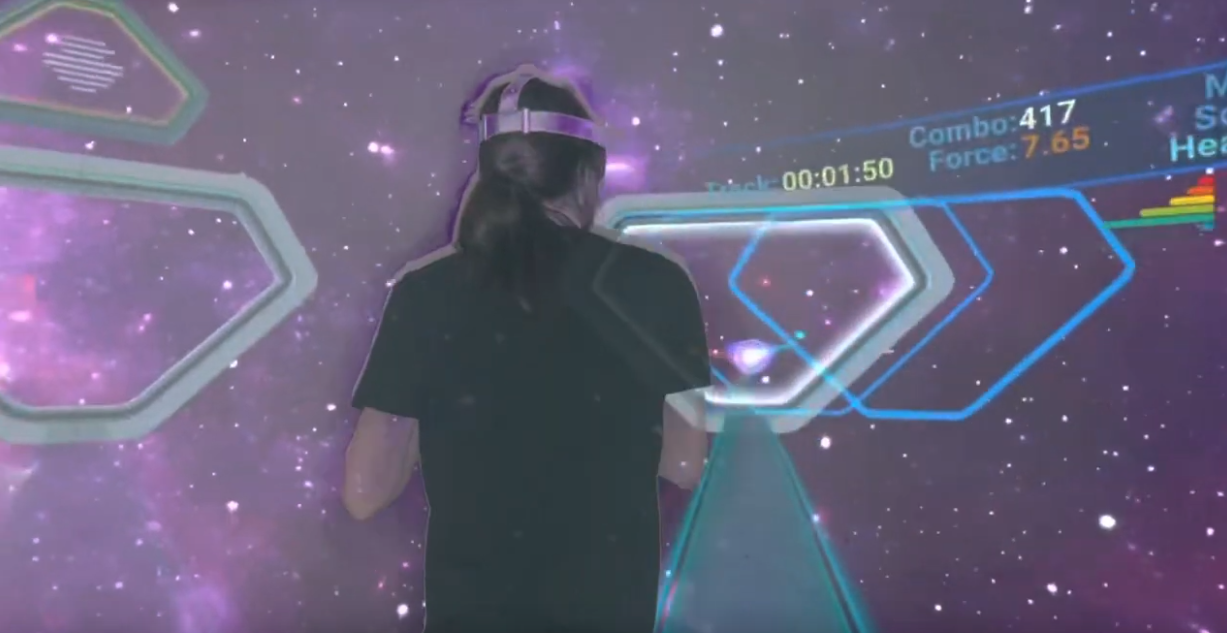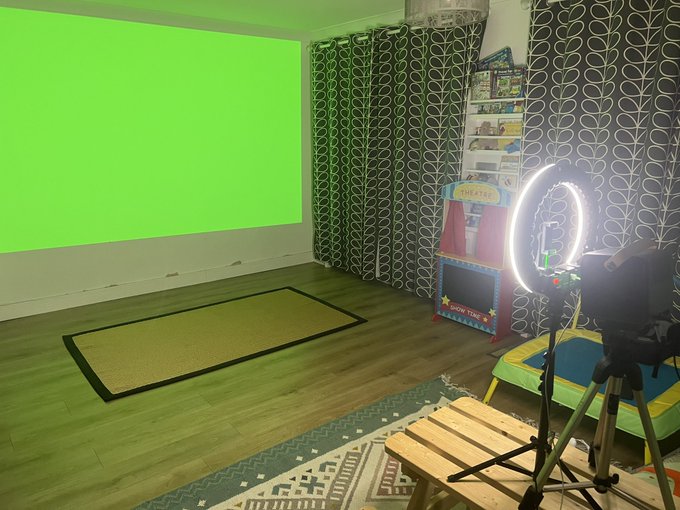Hitstream Rhythm-based Fitness on the Meta Quest 2 Review
Hitstream might first appear a frenetic mess of uncoordinated flailing, but this rhythm fitness game has a way of puppeting your body into a sort of robotic dance. A painful, energetic, robotic dance. But a dance, nonetheless.

With little frame of reference in the world of VR – to which I am largely fresh faced and new – I am forced to draw a comparison to Beat Saber. Hitstream poses the question: what if Beat Saber were trying to kill you.
Hitstream was prototyped by a single developer during peak COVID-19 as a VR exercise game. It’s an incredible accomplishment for a small team and while the menus and interface lack polish the core gameplay is painfully addictive. Literally, if you enable squats.
But my personal lack of fitness aside, let’s look at what sets Hitstream apart.
Music
Hitstream comes straight out of the gate with a diverse and interesting range of music. While it’s not all music I’m especially fond of, Hitstream’s developers are not afraid to play with the song themes in an effort to really bring you into the groove. I found myself somewhere between pain, enjoyment and appreciation for the myriad ways they managed to sync my body not only to the beat, but to the mood and even the lyrics of the music. A bridge will typically lay off the punches in lieu of catching a chain of glowing orbs. A particular lyrical hook might see you loosely mimicking the actions described in the lyrics. The variety of actions play into this well, giving plenty of flexibility in how your body is energetically choreographed to the music.
Been working on some video capture of @HitstreamVR using a @streamplify ring light to hold my phone and key light me, and a @wemaxprojectors Dice projector to throw up a green screen (green light) onto my white wall.
Edited on iOS, including the chroma key which is why it’s bad pic.twitter.com/zRdUwoMgjN
— Phil Howard (@Gadgetoid) October 31, 2022
Since Hitstream demands fairly full-body participation it doesn’t have to rely on fast-paced songs to give you a challenge. The lineup is a far cry from Beat Saber’s somewhat one-note reliance on dubstep and breakbeat in its core song packs. It feels like there’s something for everyone here, and you won’t have to go dashing straight for DLC in order to find a track set you’ll enjoy. In fact at time of writing there’s no DLC at all- but it’ll no doubt be on the way.
Space
Hitstream makes great use of the virtual space around you, effortlessly skirting around perhaps my biggest nausea trigger. The game keeps you glued to the spot but – optionally – requires you to turn and face oncoming action queues from eight directions. Subtle visual cues prevent this from being utterly disorientating. It’s quite satisfying to turn to a well timed punch, the game momentarily becoming a greater test of situational awareness. Occasionally actions will also guide you through turns, requiring a little extra bodily coordination.
You can always glance around to get an idea where the next target is coming from, but remembering to do this right in the fray is a trick in itself.
With turns enabled and while forced to take quite large steps to dodge incoming obstacles Hitstream does demand a fairly spacious play area to make the most of the game. Meta Quest’s roomscale mode didn’t do the best job of this, since my non-square play area was surrounded by obstacles at varying distances. I managed to punch the TV once.
In Beat Sabre I could handily lean slightly to avoid oncoming walls, but Hitstream really wants you to side-step quite significantly. Similarly some songs require a fair amount of ducking and weaving to guide your head through rings.
If you have the space Hitstream makes fantastic use of it, but even in my spacious living room I had to keep constantly aware of where obstacles might be. Eventually I flipped the whole room and made myself a square play area away from the TV. I still kept bumping the edges of the Guardian boundary, but there was nothing beyond it that could be damaged.
Difficulty
I find difficulty ramps in rhythm games quite frustrating and there always seems to be a sharp jump between laughably easy and unfathomably difficult. These days I don’t have the time or patience to master more difficult patterns, so Hitstream is quite refreshing.
For something captured directly on Quest 2 and greenscreen shot on my iPhone, then edited together in the iOS iMovie this is pretty respectable… all that effort just to sync my movements to the game and I *still* needed to adjust the audio sync ? pic.twitter.com/f7fmev31nS
— Phil Howard (@Gadgetoid) October 31, 2022
Difficulty is much more nuanced, rather than pick easy, medium, hard or expert you’re challenging yourself to achieve a higher score in the existing song sets- this can be done through better accuracy and timing, harder punches and enabling squats for a punishing but generous 15% score bonus. The practical upshot of this is that – during normal gameplay – you can’t fail and get bailed back to the menu screen. If you make a mistake you just power through for the set, and this gives you ample opportunity to practise and perfect without having to suffer constant restarts.
At the end of each set is a bonus song- Hitstream stops tolerating failure and you’re challenged to top up your score by punching, dodging and blocking your way through a final song without making too many mistakes. This is a great way to benchmark your progress.
Hitstream also rewards stamina since more “difficult” stages generally mean longer ones. You could be going for ten or twenty minutes in a single set- it’s really quite a workout and I can manage at best 2-3 before my energy levels drop off and I’m trying to power through with feeble wrist flicks and as little movement as possible.
I think this no-lose setup is why I enjoy Hitstream so very much. The game really absorbs me into the music and I love working with the choreography to tie actions together into fluid body movements. Not having to be interrupted by a “You Failed” message really helps with this immersion.
For the score optimising gamer the lack of failure can make it difficult to know where you’re going wrong and what needs improving- but if you’re aiming to get some enjoyment and a workout out of your play time then it flows much better and leaves the challenge to your own innate motivation.
Visuals
One of the tenets of Hitstream’s design is its panoramic location views, filling out the non-gameplay area with rich, photographic backdrops that change as you progress. These views complement the 360 degree gameplay beautifully and lend the levels their name- “Journeys.”
Gameplay elements are visually simple and clearly signpost the intended action. While there’s a lot going on to get used to, it doesn’t take more than a couple of journeys for it to feel second nature. Targets for punching look like targets, orbs for catching look like classic platformer collectibles (Lums from Rayman anyone?), walls look like… big bulky blocky things… rings you must pass through are reminiscent of NiGHTS (the SEGA Saturn game) and objects you must block look like shields. To the seasoned gamer these things are familiar and will definitely help get you used to the gameplay flow quickly.
Overall
Hitstream is an energetic and engrossing audio visual workout. It makes a concerted effort to take advantage of the Quest 2’s freedom and controller sensitivity. It provides a nuanced scoring system that rewards you pushing yourself harder. It’s both hopelessly addictive and incredibly exhausting to play.
If you want to trick yourself into an energetic workout, I couldn’t recommend it more. You can pick it up for £14.99 from the Occulus store.
Capturing footage of the game was a laugh, too!
The setup.
I wonder if Quest will go apeshit in this whacky lighting… pic.twitter.com/gBIObrJaIR
— Phil Howard (@Gadgetoid) October 31, 2022


